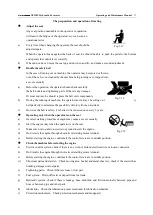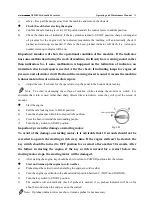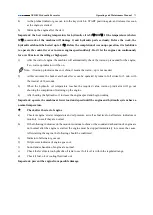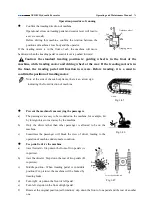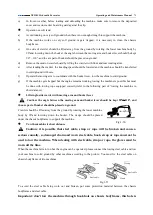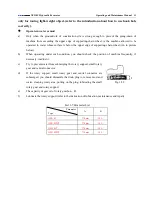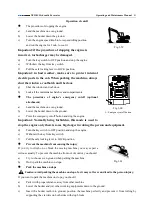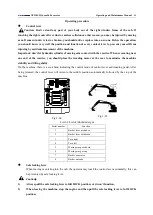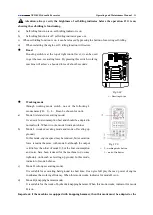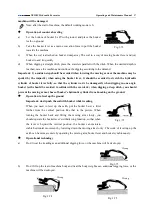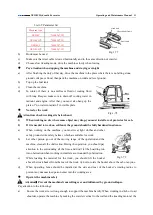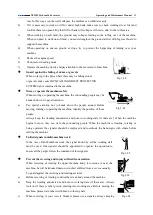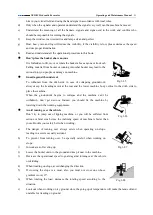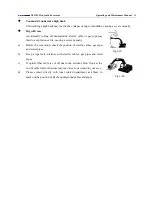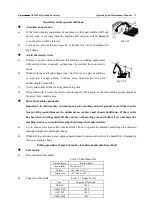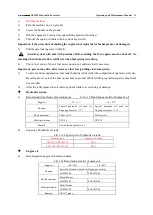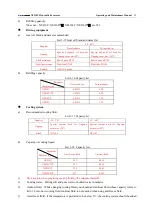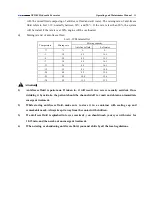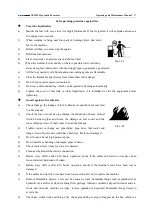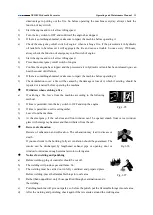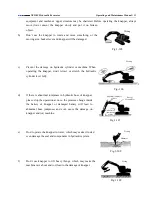
XE210C Hydraulic Excavator
Operating and Maintenance Manual
87
machine will be damaged.
Note: after the start of machine, the default working mode is S.
Operation of counter-shoveling
a)
Let the bottom of bucket be 45°with ground, and place the bucket
teeth on ground.
b)
Take the bucket lever as a main excavation force to pull the bucket
towards the machine.
c)
When the soil is attached on bucket, dump away The soil in a way of moving bucket lever and (or)
bucket to and fro quickly.
d)
When digging a straight ditch, place the crawlers parallel with the ditch. When the desired depth is
reached, move the machine and continue the digging according to the demand.
Important: 1) a sudden stop should be avoided when lowering the moving arm or the machine may be
spoiled by the impact.2) when using the bucket lever, it should be avoided to stretch the hydraulic
cylinder of bucket lever fully, so that the cylinder won’t be damaged.3) when digging in one angle,
bucket teeth should be avoided to collide with the crawler.4) when digging a deep ditch, you should
prevent the moving arm or hose of bucket’s hydraulic cylinder from knocking on the ground.
Operation to level up the ground
Important: don’t push the soil with bucket while treading.
When you need to level up the earth, put the bucket Lever a litter
further from the vertical position like that in the picture. When
turning the bucket back and lifting the moving arm slowly, you
should operate the bucket lever’s withdrawing function, so that when
the lever is beyond the vertical position, the bucket can maintain
stable horizontal movement by lowering down the moving arm slowly. The work of leveling up the
earth can be more accurate by operating the moving arm, bucket lever and bucket synchronously.
Operational technology
a)
Don’t treat the treading as an additional digging force, or the machine will be destroyed.
b)
Don’t lift up the rear of machine body and treat the body weight as an additional digging force, or the
machine will be destroyed.
Fig.1-71
Fig.1-72
Fig.1-73
Fig.1-75
Fig.1-74
Wrong
Wrong
Wrong

